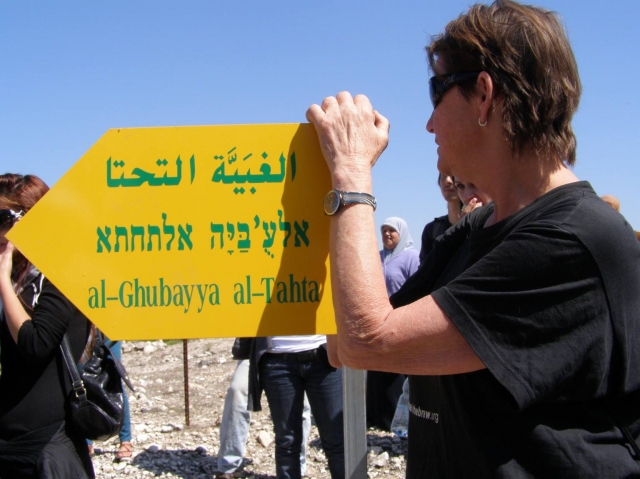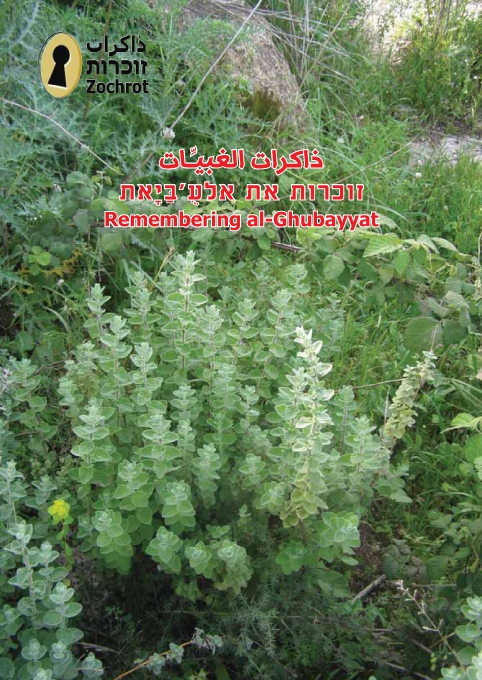Info
District: Haifa
Occupation date: 12/03/1948
Jewish settlements on village/town land before 1948: None
Jewish settlements on village/town land after 1948: Part of Mishmar HaEmek
Background:
Al-Ghubayya al-Tahta Before 1948
At a distance of 28 km from Haifa, the village was located on a hill which overlooked the plain of Marj ibn 'Amir. Together with al-Ghubayya al-Fawqa and al-Naghnaghiyya, it was part of a group of three villages known as al-Ghubayyat, located on the eastern slopes of bilad al-rawha'. The Haifa-Jinin highway ran close to al-Ghubayya al-Tahta to the northeast. 'Tahta' means lower, and served to distinguish it from its 'upper' counterpart - al-Ghubayya al-Fawqa.
The population of the village was Muslim, and its houses were made of cement and mud. It shared an elementary school with the other two villages, built in 1888 during Ottoman rule, and closed down under the Mandate. The three villages had access to a number of water resources, such as wadis, springs, and the al-Muqatta' River, and their economies were based on animal husbandry and agriculture. There were a number of khirbas on their lands, which contained artifacts such as fragments of pottery, pieces of masonry, and an olive press. The nearest large archeological site was at Tall Abu Shusha.
Occupation, Depopulation, and Israeli Settlements
On 15 March 1948, New York Times reported that the Haganah demolished fourteen houses and damaged ten others in the village, adding that '[t]here were no casualties, as the village had been evacuated after a Jewish attack on Friday [12 March].' There are no further details about that earlier attack and it's not clear whether the villagers then returned. Regarding the Haganah demolition, the correspondent commented: 'In what appears to be a new strategy: concentration on the destruction of property..., the Haganah has in the last three days carried out five such 'punitive' operations.' The attack was confirmed by Palestinian historian 'Arif al-'Arif, writing that the village was completely destroyed in the first months of the war by Zionist forces from the nearby settlement of Mishmar ha-'Emeq, which was at some points no more than 50 m away. He adds that the inhabitants of the village had by then already sought refuge in the nearby village of al-Ghubayya al-Fawqa.
Following the two March attacks on the village, the Arab Liberation Army (ALA) launched in early April 1948 an attack on Mishmar ha-'Emeq. ALA commander Fawzi al-Qawuqji reported that when British forces ordered the ALA to cease the attack on the kibbutz, they agreed, provided that Jewish forces refrained from taking revenge on the surrounding villages. Nevertheless, the Haganah command refused the offer and ordered their units to occupy and destroy the surrounding villages of Marj ibn 'Amir. After a 'pitched battle' was fought around the two villages of al-Ghubayya al-Tahta and al-Ghubayya al-Fawqa, they were captured by Zionist forces around the middle of April.
On 25 April 1948, the inhabitants of al-Ghubayya al-Tahta were attacked by the settlers of Kibbutz Mishmar ha-'Emeq from the northwest of the village, and the houses still standing after the Haganah attack on 15 March were destroyed.
Part of the settlement of Midrakh 'Oz is on village land.
The Village Today
There are no traces of houses left. The Israeli settlement of Midrakh 'Oz, along with its playgrounds and race tracks, has completely occupied the site. The olive trees now found there were most probably planted before its establishment.
------------------------
Source: al-Khalidi, Walid (ed.). All that remains: the Palestinian villages occupied and depopulated by Israel in 1948. Washington DC: 1992.




